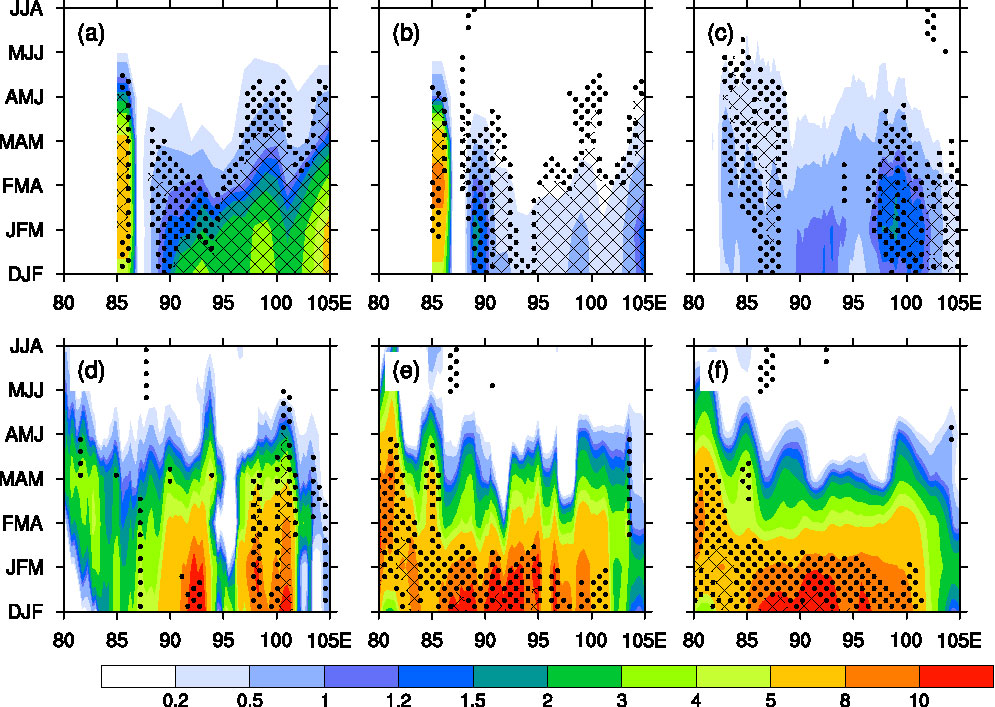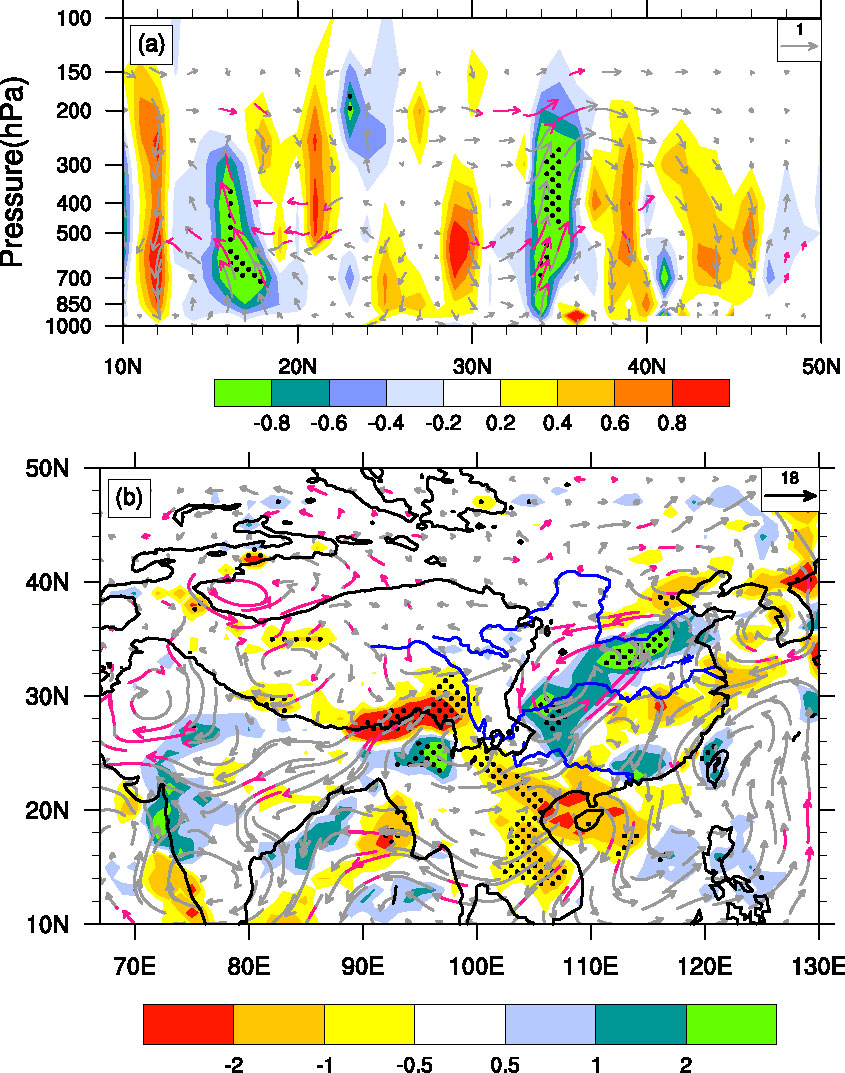State Key Laboratory of Numerical Modeling for Atmospheric Sciences and
Geophysical Fluid Dynamics (LASG)
Institute of Atmospheric Physics, Chinese Academy of Sciences

Vol. 1/No.1 December 2016
Impacts of Tibetan Plateau Snow Cover on the Interannual Variability of the East Asian Summer Monsoon
Highlight: East Asian Summer monsoon is modulated by snow cover over the western TP and the Himalayas, but not by the snow cover over the central and eastern TP.
Tibetan Plateau (TP) plays an important role on modulating the Asian summer monsoon, and the effect of TP snow cover on the East Asian summer monsoon (EASM) is always a research hotspot. Though the relationship between the TP snow cover and the EASM has long been discussed, the underlying mechanism remains controversial, due to there are large uncertainties on monitoring TP snow cover and the complex of the EASM.
Recently, based on data analysis and model simulation, Dr. XIAO Zhixiang and Prof. DUAN Anmin (Institute of Atmospheric Physics) pointed out that persistent effects of winter snow cover are limited to the period from winter to spring over most parts of the central and eastern TP (Figure 1), thus the preceding snow cover over the central and eastern TP exerts little influence on the EASM. While the effects of winter or spring snow cover anomalies over the western TP and the Himalayas can last until summer and it has a great impact on the EASM, which has been confirmed by WRF model (Figure 2).

Figure 1. Longitude–time section differences of snow datasets between above- and below-normal snow cover years, based on the winter NSCDs index averaged from 28°N to 38°N: (a) station-observed number of snow cover days (NSCDs, units: d); (b) station-observed snow depth (units: cm); (c) satellite-derived snow depth (units: cm) improved by Dai and Che (2010); (d) satellite-derived SWE (units: mm) obtained from NSIDC; (e) satellite-derived snow cover (units: %) obtained from US National Snow and ICE Data Center; (f) satellite-derived snow cover (units: %) obtained from Rutgers University. The dotted (meshed) regions indicate statistical significance at the 90% (95%) confidence level according to the Student’s t-test.
Figure 2. Difference fields between the above and below normal snow experiments in summer: (a) pressure–latitude cross-section for the vectors composed of meridional velocity (units: m s−1) and vertical velocity (shaded, units: 10−2 Pa s−1), averaged from 110°E to 120°E; (b) precipitation (shaded; units: mm d−1) and atmospheric column water vapor flux (vectors; units: kg m−1 s−1) integrated from the surface to 300 hPa. The dotted areas and red vectors indicate statistical significance at the 95% confidence level. The black curve outlines the TP area with an average altitude higher than 2000 m in panel (b).
Citation:
Xiao, Z. X., and Duan, A. M., 2016: Impacts of Tibetan Plateau Snow Cover on the Interannual Variability of the East Asian Summer Monsoon, J. Climate, doi: http://dx.doi.org/10.1175/JCLI-D-16-0029.1.
Download: http://journals.ametsoc.org/doi/10.1175/JCLI-D-16-0029.1
Contact: DUAN Anmin, amduan@lasg.iap.ac.cn
E-mail: lasg_newsletter@lasg.iap.ac.cn
Editors: Chuanyi Wang (wangcy@lasg.iap.ac.cn), Kangjun Chen(ckj@lasg.iap.ac.cn)